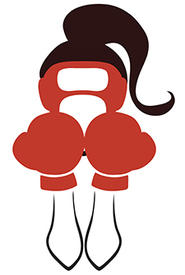Commonly confused serving sizes (pasta, others?)

Wiseandcurious
Posts: 730 Member
May be it's overkill to have a whole topic for this but I saw at least 3 people today say that they never knew the recommended serving size for most pasta (85g typically, but may vary) is dry weight. Another one was possibly misunderstanding the serving size too.
60-80g of prepared pasta must really be a heartbreaking amount. I think someone mentioned in that context that they didn't allow themselves any for a year, presumably because they didn't think they could keep up with the serving size.
Some packages give both dry and prepared weight, but many don't, apparently enough to have quite a few people confused.
If you can think of other food items whose serving size is a common subject of confusion, please share them! (I don't mean hard to eyeball, I mean items where people might be misled to serve a completely different amount, like with pasta).
60-80g of prepared pasta must really be a heartbreaking amount. I think someone mentioned in that context that they didn't allow themselves any for a year, presumably because they didn't think they could keep up with the serving size.
Some packages give both dry and prepared weight, but many don't, apparently enough to have quite a few people confused.
If you can think of other food items whose serving size is a common subject of confusion, please share them! (I don't mean hard to eyeball, I mean items where people might be misled to serve a completely different amount, like with pasta).
0
Replies
-
2 oz. pasta dry is still a sad amount once cooked, but such is life!
A lot of people seem to be confused about rice too, although most listings for rice are for cooked rather than dry.0 -
I honestly don't understand weighing things like pasta or rice cooked. Wouldn't the weight vary by how long they were cooked/how much water they'd absorbed?
I eat a high protein bean pasta mixed with a lot of vegetables so have learned to be content with the 2 ounce serving, but it was very sad looking at first.0 -
Tinabob777 wrote: »I hate the serving sizes of popcorn. It confuses that daylights out of me.
Totally agree with this one! I can't make heads or tails out of the microwave labels! I just buy the already popped stuff and weigh it out.
0 -
I spent about four months eating really sad amounts of pasta until I learned how to measure it properly.
I get confused about canned tuna. It has a weight, but then it has a "drained" weight. Mine never matches the drained weight. It's just water though, so do I log the drained weight or the weight I get.0 -
When preparing food at home for your family, how would you measure out a serving like lasagne? Or a one pot meal that has several ingredients?0
-
When preparing food at home for your family, how would you measure out a serving like lasagne? Or a one pot meal that has several ingredients?
You calculate all of the ingredients in advance and divide it into a pre-determined number of servings. In other words, you use the recipe function.0 -
Semi-solids with a liquid measurement. I'm looking at ice cream and canned fruits/veggies.
ETA: I'm in Canada and most foods have gram weights, but the above items are half a cup/125 mL. Gimme grams, dammit! Stop making me do math, Health Canada! >:(0 -
When preparing food at home for your family, how would you measure out a serving like lasagne? Or a one pot meal that has several ingredients?
I measure the pan before adding anything, measure when it's full of the food, subtract the first from the second - that's your food weight. I usually have an ounce as a serving. So if my dish weighs 40 ounces, there are 40 servings. It makes it easy to log. 0
0 -
-
i must be measuring my pasta wrong on my food scale because i thought 1-2 ounces of spaghetti was plenty .__.0
-
Oatmeal: dry vs. wet, and any kind of fruit!0
-
People measuring any solid food with a cup confuses me. I see it a lot with cereal and fruit pieces especially.
The gluten-free pasta I normally eat recommends a 70g dry weight portion, which looks like an awfully small portion to me, so I usually make it from 110g dry weight - it actually looks like a filling meal that way - and I make it fit my cals.0 -
While the info for most meats are for raw weight, the labels on bacon specify they are for weight after frying. Since it's impossible to cook any two pieces of bacon exactly the same there is no guarantee the bacon you cook will be the same level of doneness as the standards used for labeling. Weighing it cooked will still be closer to accurate than weighing it raw.0
-
I'm confused with serving sizes of frozen vs cooked meat. In most cases, it weighs more frozen. So do I track the frozen weight or the cooked weight? So far I have been tracking the cooked weight, but I could be wrong all this time.0
-
2 ounces dry is a good portion for me. It was when I was measuring out 2 ounces cooked that it was really sad.0 -
I'm confused with serving sizes of frozen vs cooked meat. In most cases, it weighs more frozen. So do I track the frozen weight or the cooked weight? So far I have been tracking the cooked weight, but I could be wrong all this time.
It really just depends on how you log it - make sure you're using either the raw entry, or the cooked one. Aside from that, it doesn't really matter.0 -
this thread is pointing out the confusing serving sizes but no one is posting what is the correct way to measure/weigh the serving sizes for different foods. if anyone can post a link to a reference it would be great.0
-
I agree. It's a plateful, and I use regular sized plates.0 -
I'm confused with serving sizes of frozen vs cooked meat. In most cases, it weighs more frozen. So do I track the frozen weight or the cooked weight? So far I have been tracking the cooked weight, but I could be wrong all this time.
Preferably, you're supposed to weigh it uncooked and unfrozen, just room temp or refrigerator temp raw. You can use settings for cooked, but, like the bacon, it's a crapshoot if your level of cooking is remotely close to that used for setting the info for cooked meat. Roasting something 5 minutes longer could add another 5% to calories by weight, because you've lost that much more moisture. Roasting it 5 minutes less could mean you're overlogging by 5% because you have more moisture offsetting the weight and increasing the distribution of calories.0 -
TheVirgoddess wrote: »It really just depends on how you log it - make sure you're using either the raw entry, or the cooked one. Aside from that, it doesn't really matter.Preferably, you're supposed to weigh it uncooked and unfrozen, just room temp or refrigerator temp raw. You can use settings for cooked, but, like the bacon, it's a crapshoot if your level of cooking is remotely close to that used for setting the info for cooked meat. Roasting something 5 minutes longer could add another 5% to calories by weight, because you've lost that much more moisture. Roasting it 5 minutes less could mean you're overlogging by 5% because you have more moisture offsetting the weight and increasing the distribution of calories.
Well I guess I could always weigh the meat frozen, then again cooked, and just use the average. That way I can be kinda wrong and kinda right!
0 -
this thread is pointing out the confusing serving sizes but no one is posting what is the correct way to measure/weigh the serving sizes for different foods. if anyone can post a link to a reference it would be great.
Weigh solids with a food scale and liquids with measuring cups. The portion size you make of any food is of course entirely up to you. I reckon people usually people go by a combination of how hungry they are, how calorie-dense the food is and how many calories they have available. For example, when I have pasta, I like a great big portion, which is very calorie-dense once I add sauce and topping, so I don't eat a whole lot else that day (which also ensures I'm hungry enough to eat it all.)0 -
TheVirgoddess wrote: »It really just depends on how you log it - make sure you're using either the raw entry, or the cooked one. Aside from that, it doesn't really matter.Preferably, you're supposed to weigh it uncooked and unfrozen, just room temp or refrigerator temp raw. You can use settings for cooked, but, like the bacon, it's a crapshoot if your level of cooking is remotely close to that used for setting the info for cooked meat. Roasting something 5 minutes longer could add another 5% to calories by weight, because you've lost that much more moisture. Roasting it 5 minutes less could mean you're overlogging by 5% because you have more moisture offsetting the weight and increasing the distribution of calories.
Well I guess I could always weigh the meat frozen, then again cooked, and just use the average. That way I can be kinda wrong and kinda right!
Do you buy the meat already frozen and then cook it while it's still frozen?0 -
SteampunkSongbird wrote: »People measuring any solid food with a cup confuses me. I see it a lot with cereal and fruit pieces especially.
Why would measuring out a cup of dry cereal be wrong? If the serving size listed is 3/4 of a cup or 1 cup or whatever, why would it be more accurate to weigh it? I use measuring cups for this type of thing. I do weigh fruit and log it in ounces.0 -
SteampunkSongbird wrote: »People measuring any solid food with a cup confuses me. I see it a lot with cereal and fruit pieces especially.
Why would measuring out a cup of dry cereal be wrong? If the serving size listed is 3/4 of a cup or 1 cup or whatever, why would it be more accurate to weigh it? I use measuring cups for this type of thing. I do weigh fruit and log it in ounces.0 -
TheVirgoddess wrote: »It really just depends on how you log it - make sure you're using either the raw entry, or the cooked one. Aside from that, it doesn't really matter.Preferably, you're supposed to weigh it uncooked and unfrozen, just room temp or refrigerator temp raw. You can use settings for cooked, but, like the bacon, it's a crapshoot if your level of cooking is remotely close to that used for setting the info for cooked meat. Roasting something 5 minutes longer could add another 5% to calories by weight, because you've lost that much more moisture. Roasting it 5 minutes less could mean you're overlogging by 5% because you have more moisture offsetting the weight and increasing the distribution of calories.
Well I guess I could always weigh the meat frozen, then again cooked, and just use the average. That way I can be kinda wrong and kinda right!
I wouldn't weigh it frozen. Just raw (thawed) or cooked.0 -
One Pop Tart should not be "a serving."
 0
0 -
JenMaselli wrote: »SteampunkSongbird wrote: »People measuring any solid food with a cup confuses me. I see it a lot with cereal and fruit pieces especially.
Why would measuring out a cup of dry cereal be wrong? If the serving size listed is 3/4 of a cup or 1 cup or whatever, why would it be more accurate to weigh it? I use measuring cups for this type of thing. I do weigh fruit and log it in ounces.
Have you ever tested to see the difference between the serving size in grams vs the cup serving size?0 -
A dry two ounces of pasta does not cook up to be a plateful of pasta.
Maybe a Fiestaware salad plate, if it is a bigger pasta and you really overcook it. Maybe.0 -
JenMaselli wrote: »SteampunkSongbird wrote: »People measuring any solid food with a cup confuses me. I see it a lot with cereal and fruit pieces especially.
Why would measuring out a cup of dry cereal be wrong? If the serving size listed is 3/4 of a cup or 1 cup or whatever, why would it be more accurate to weigh it? I use measuring cups for this type of thing. I do weigh fruit and log it in ounces.
I haven't found measuring cups to be all that inaccurate when you don't cheat and try to crush as much into it as you can. However, even your best honest efforts can be off by some grams that make a difference...in theory. In practice, I have lost 80+ lbs using only measuring cups and spoons up until about a month ago when I got a free scale from work. So I don't know how big of a difference it ultimately makes. YMMV.0
This discussion has been closed.
Categories
- All Categories
- 1.4M Health, Wellness and Goals
- 398.2K Introduce Yourself
- 44.7K Getting Started
- 261K Health and Weight Loss
- 176.4K Food and Nutrition
- 47.7K Recipes
- 233K Fitness and Exercise
- 462 Sleep, Mindfulness and Overall Wellness
- 6.5K Goal: Maintaining Weight
- 8.7K Goal: Gaining Weight and Body Building
- 153.5K Motivation and Support
- 8.4K Challenges
- 1.4K Debate Club
- 96.5K Chit-Chat
- 2.6K Fun and Games
- 4.8K MyFitnessPal Information
- 12 News and Announcements
- 21 MyFitnessPal Academy
- 1.6K Feature Suggestions and Ideas
- 3.2K MyFitnessPal Tech Support Questions















